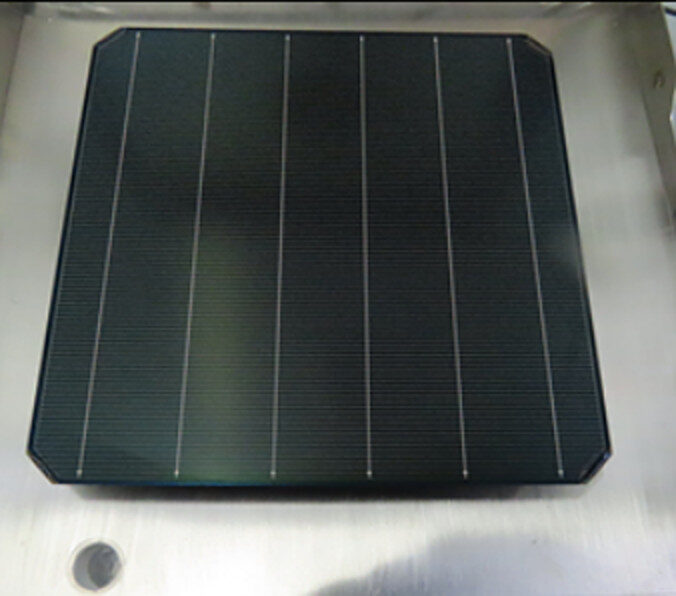From pv magazine France
TSE inaugurated its first agrivoltaic demonstrator on field crops in France last year. The experimental project is equipped with its “agricultural canopy,” which is a large canopy equipped with rotating solar panels fixed on cables 5 meters above the fields.
The field crop farm grows soya, wheat, fodder rye, winter barley, and rapeseed, in addition to housing 150 cows. It has has faced very hot and very dry summers for the past 10 years. TSE installed the PV system to benefit from its shade, as well as the drop in evapotranspiration and temperature during the summer. The agrivoltaic system produces 3.2 GWh of electricity per year.
The French developer has now presented the project’s first results. Soybeans were sown in early June 2022 on an area spanning 3 hectares. The site was covered by the PV canopy. For the first trial, six different varieties of soybeans were planted, with harvesting on Oct. 12, 2022.
The teams observed solid vegetative growth of the soybeans, with normal flowering, fertilization, and physiological maturation. The six varieties tested presented a diversity of yields: up to 25% difference in yield under the canopy and 19% on the control field.
“Despite a strong heterogeneity of the environment and in particular of the soil, the data obtained, in particular for the Soprana variety, announce extremely promising results for future harvests: no significant difference for the overall yield and the number of pods of the soybeans outside and under the canopy, with higher 1000 kernel weight under the canopy,” said TSE.
Regarding temperatures, the agrivoltaic canopy provided better protection against thermal stress during heat stroke: the maximum temperature observed under the canopy is 1.2 C lower than the control area. The ground under the PV system remained cooler and retained the humidity better: on average, the readings indicate -3.5 C at a depth of 30 cm in the center of the system from June to mid-August.
In addition, the water potential was found to be higher under the canopy. At the time of flowering and the start of grain filling, the soybeans in the control zone were under water stress, unlike the soybeans under the PV canopy.
“Following this episode, I could see damage on the control area, whereas the soybean planted under the panels was better protected,” said farmer Sylvain Raison.
This content is protected by copyright and may not be reused. If you want to cooperate with us and would like to reuse some of our content, please contact: editors@pv-magazine.com.




For several years I have looked for a net form of photovoltaics (made of high tensile twine with PV properties) and to combine these with drip irrigation from passive solar desalination to combat desertification. I know PV is a wafer system, generally speaking, but this is practical evidence that such a system would work. Thanks.